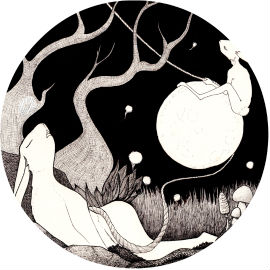The architecture of Amsterdam is one of its most unique features. Tall, narrow houses lean forward into the streets, over streets paved with small, ochre bricks. The houses are built this way partly because, at the time many of these houses were built, their owners were taxed on the amount of street frontage they had. Because the buildings are so narrow, and the stairwells steep and narrow enough to feel like the ladder-like stairs in a boat, moving in is a challenge. Houses generally have a large beam protruding from the gable at the top of the house. A block and tackle is employed to lift furniture and crates into the upper floors.

This house features a decorated neck gable. Decorative gables are common in Amsterdam, and come in a few distinctive forms. The neck gable is most common on buildings built between the mid-1600s and the mid-1800s. Here’s another lovely example, with the decorations formed by two female figures:
What other gable styles are there? I’m so glad you asked!






No Comments